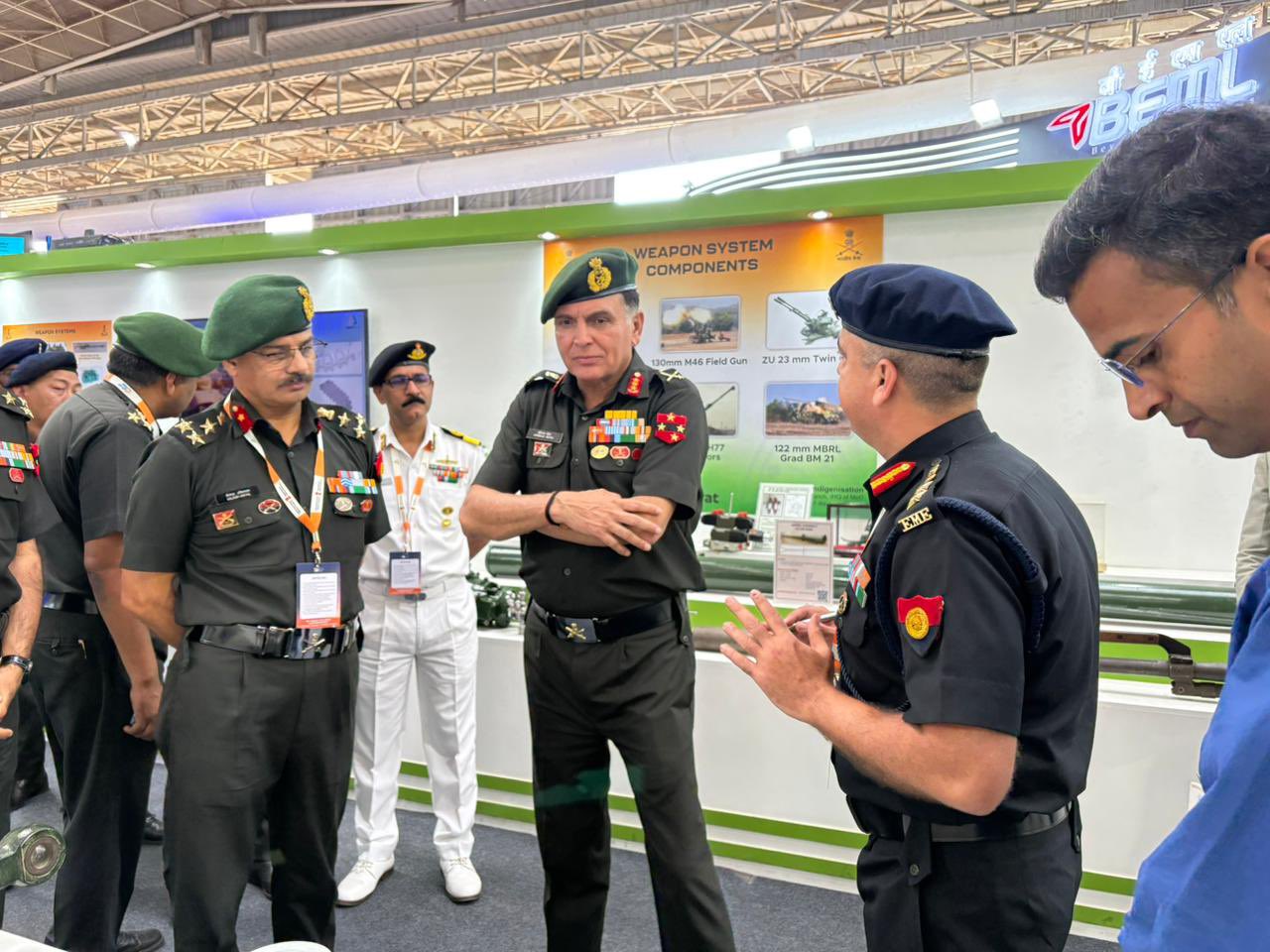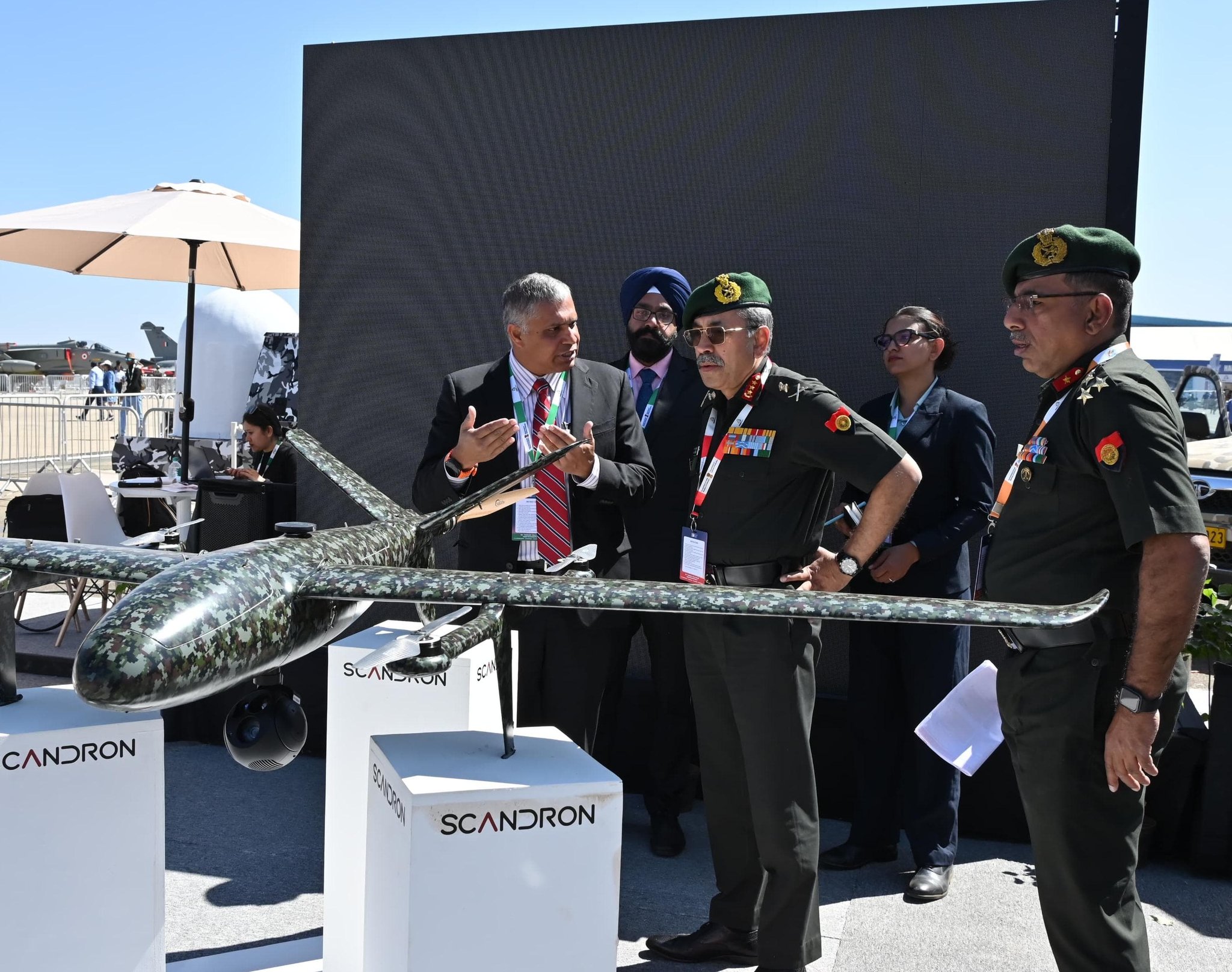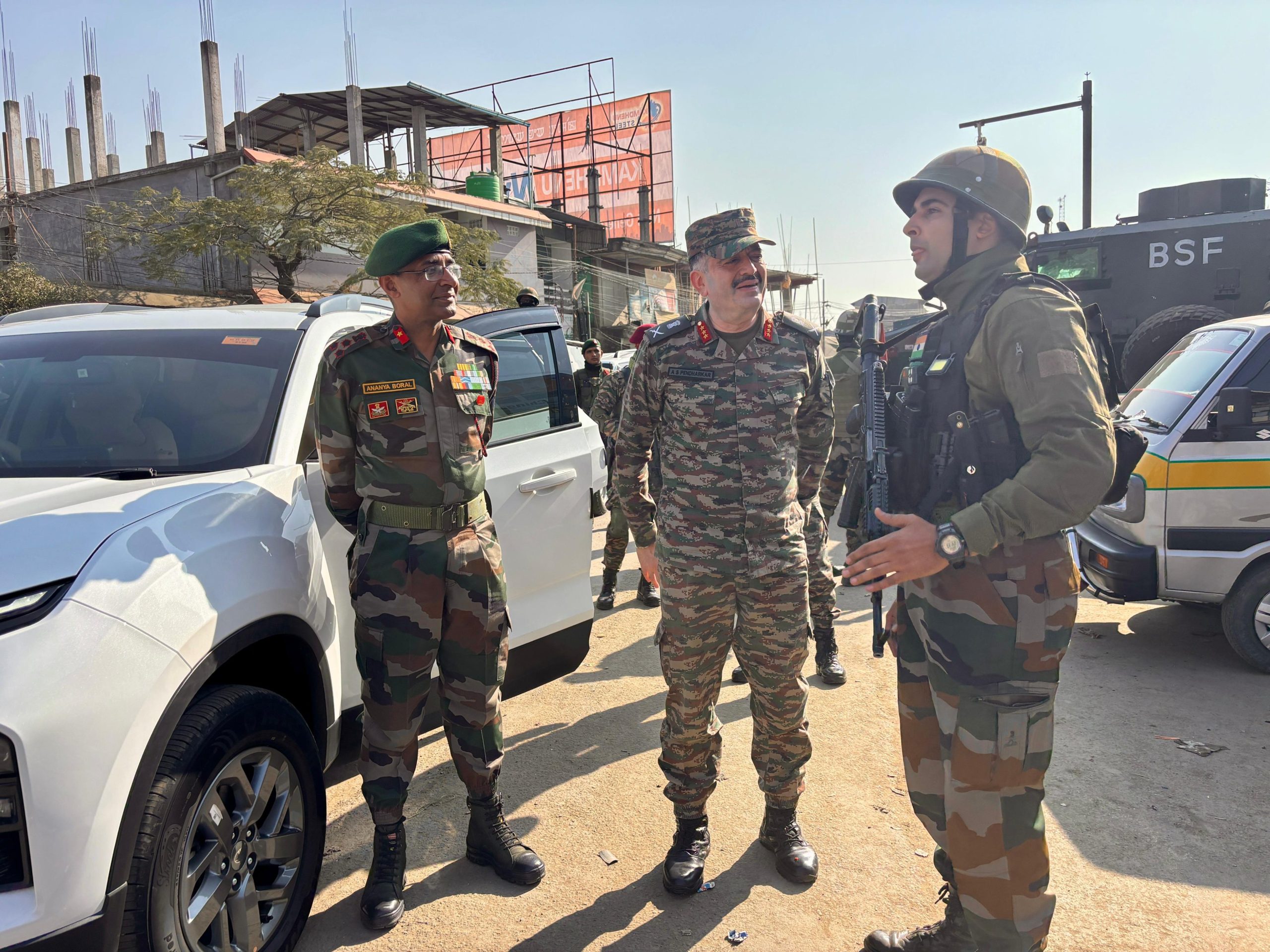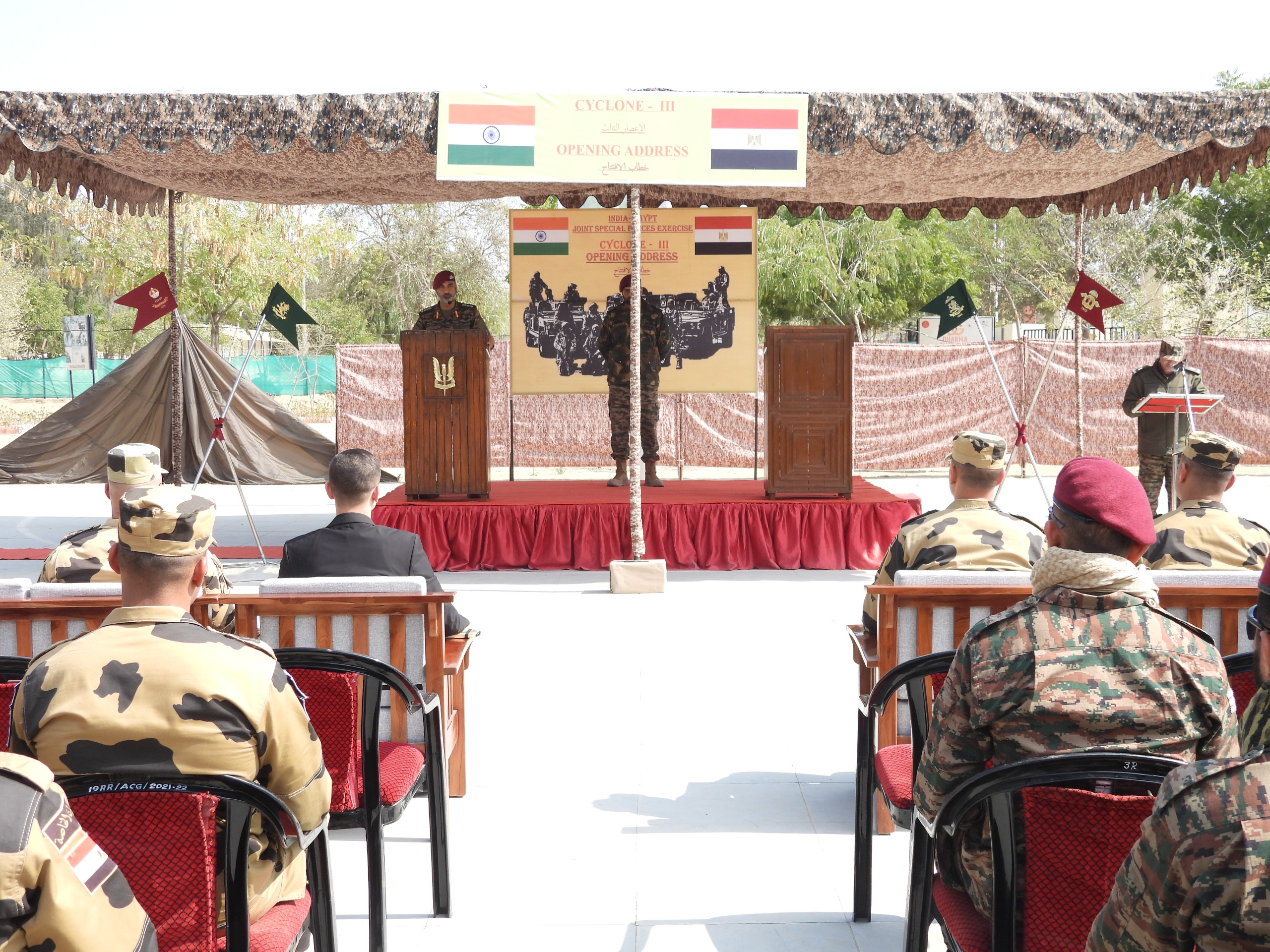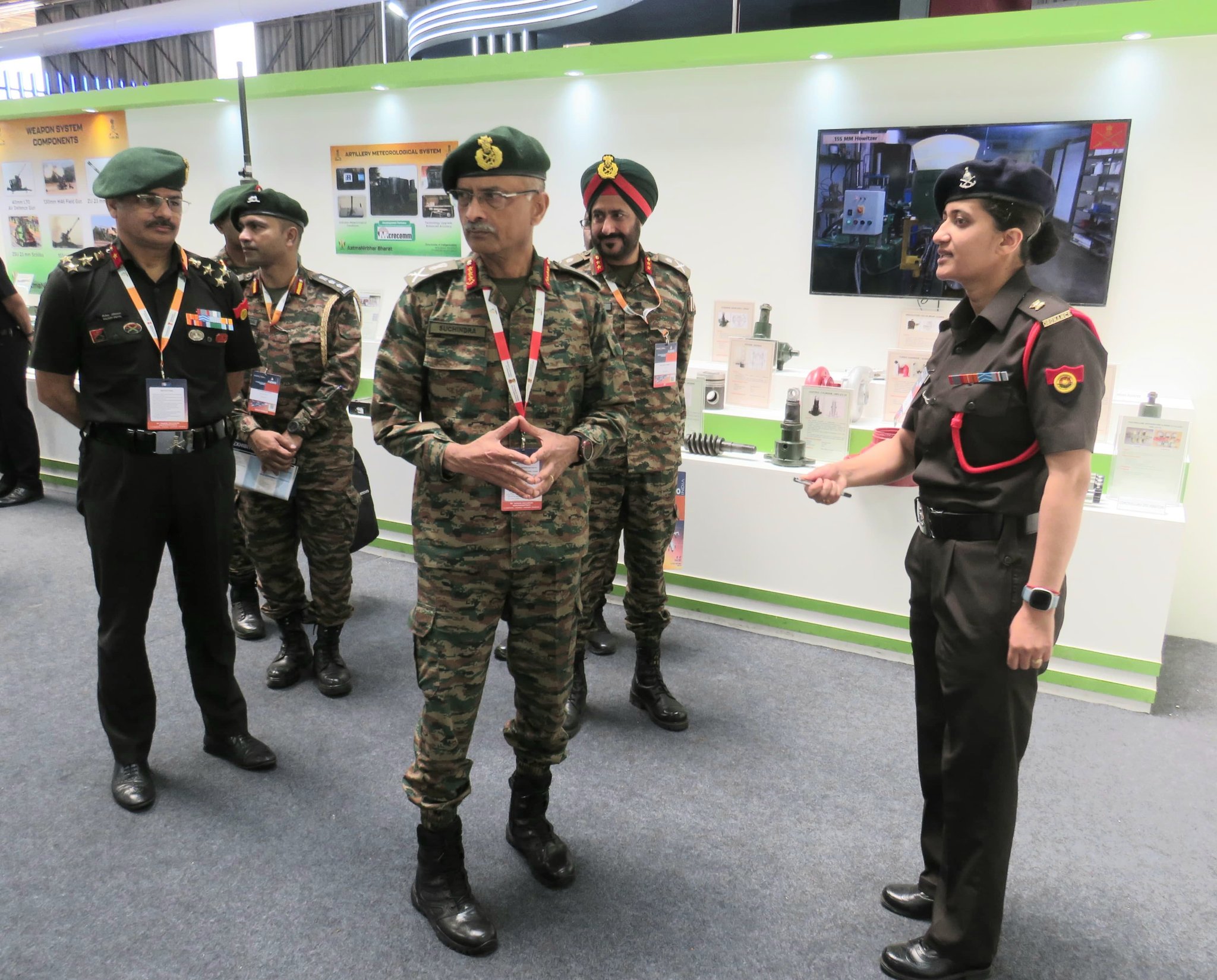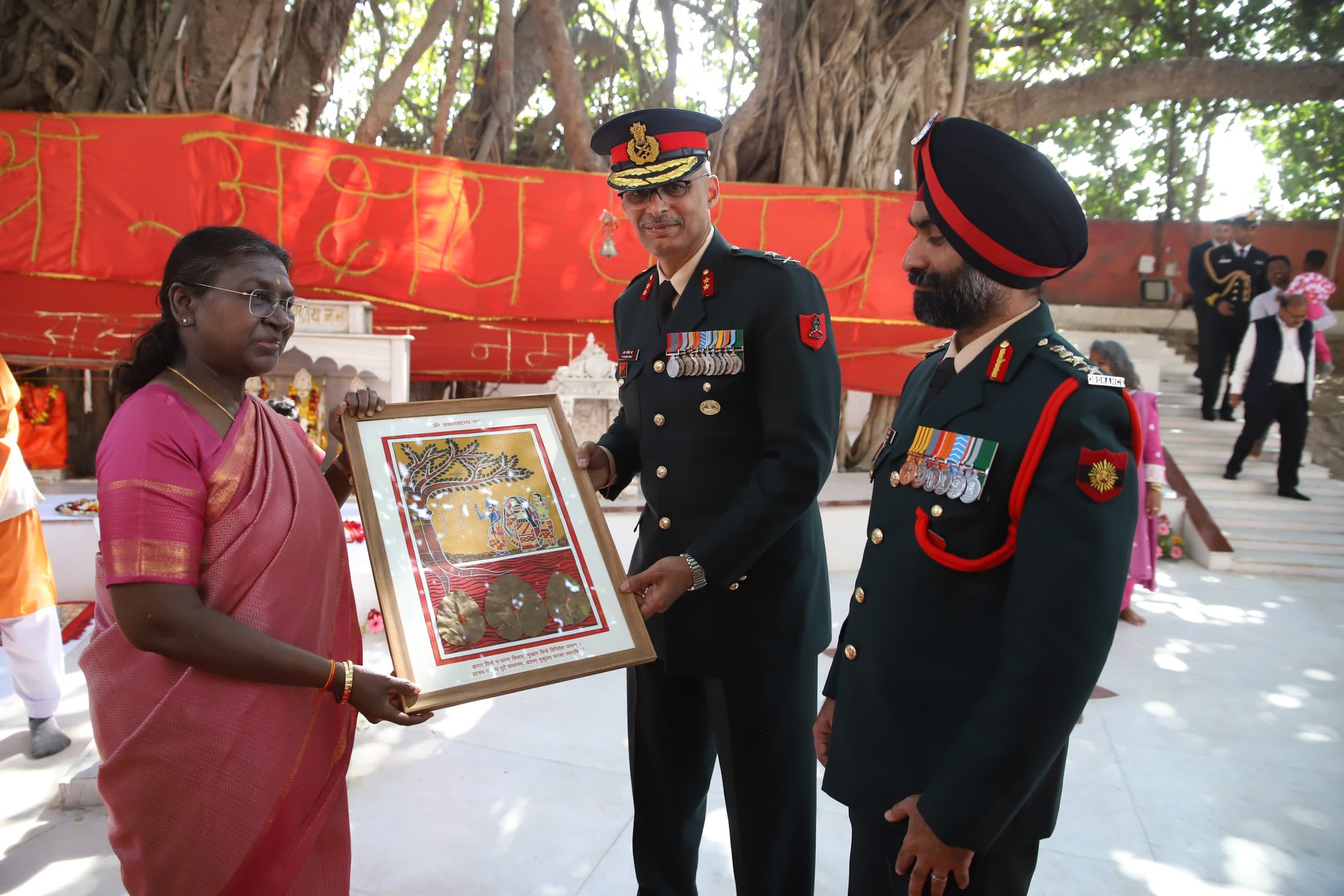Lt Gen Dhiraj Seth Visits Aero India 2025
Lieutenant General Dhiraj Seth, Army Commander, Southern Command, visited Aero India 2025, where he witnessed a spectacular showcase of cutting-edge…
Lt Gen NS Raja Subramani Highlights India’s Defence Modernisation Journey
Lieutenant General NS Raja Subramani, Vice Chief of the Army Staff (VCOAS), visited Aero India 2025, where he received a…
Lt Gen Abhijit S Pendharkar Reviews Operational Preparedness in Manipur
Lieutenant General Abhijit S Pendharkar, General Officer Commanding (GOC), Spear Corps, conducted a key visit to Imphal, Manipur, to review…
Ex CYCLONE-III: India-Egypt Joint Special Forces Exercise Commences in Rajasthan
The third edition of the India-Egypt Joint Special Forces Exercise, Ex CYCLONE-III, commenced at the Mahajan Field Firing Ranges in…
Aero India 2025: Indian Army Showcases Major Strides in Ammunition Indigenisation
The Indian Army’s stalls at Aero India 2025 witnessed a large influx of visitors on the inaugural day, reflecting the…
Hon’ble President Droupadi Murmu Visits Akshayvat Complex and Saraswati Koop in Prayagraj
The Hon’ble President of India, Smt Droupadi Murmu, accompanied by the Hon’ble Governor of Uttar Pradesh, Smt Anandiben Patel, and…

